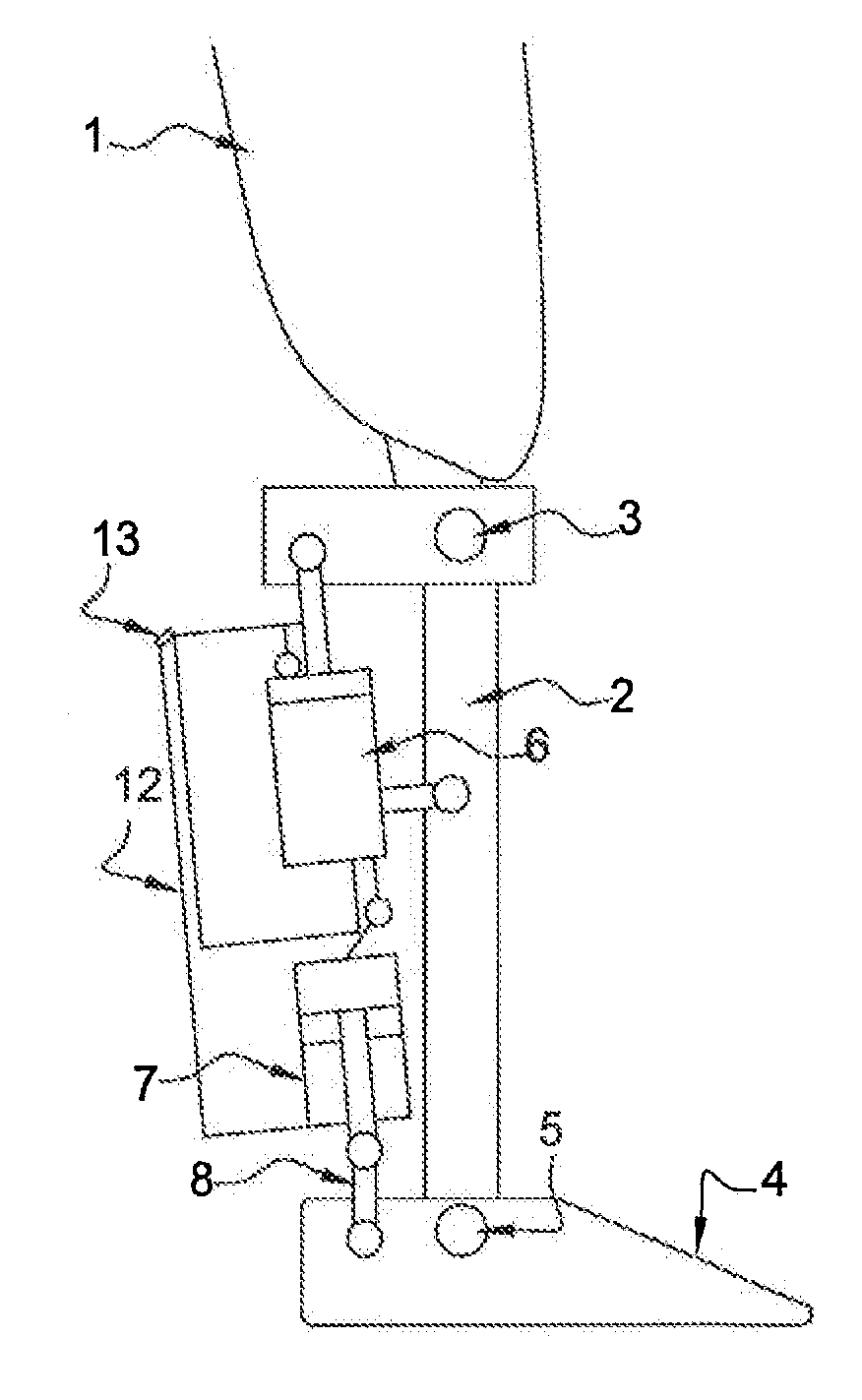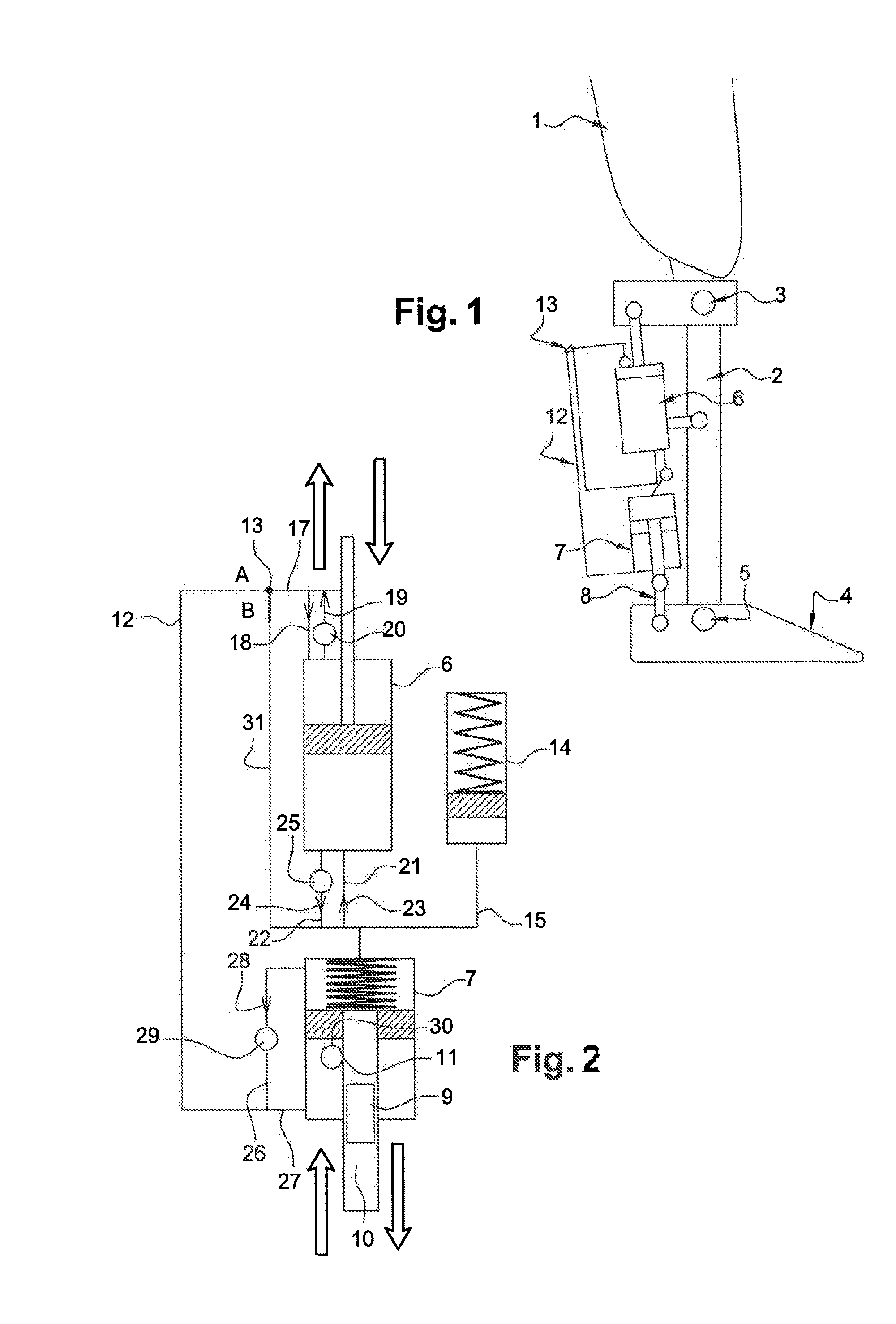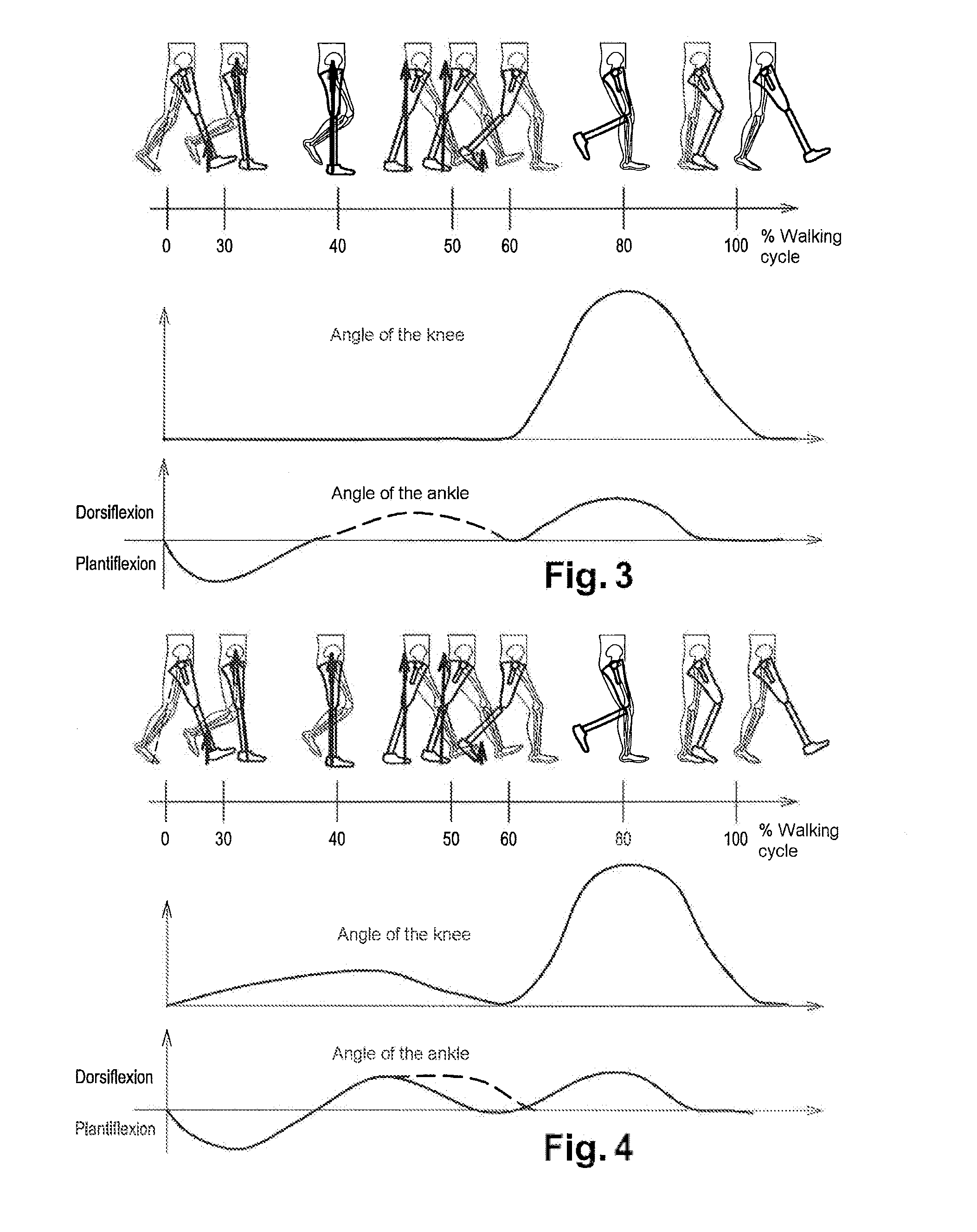Hydraulic system for a knee-ankle assembly controlled by a microprocessor
a microprocessor and articulation system technology, applied in the field of knee and ankle prosthesis, can solve the problems of “falling” on the contralateral limb, significant increase in the effort taken by, and increase in the joint torque in the entire contralateral limb
- Summary
- Abstract
- Description
- Claims
- Application Information
AI Technical Summary
Benefits of technology
Problems solved by technology
Method used
Image
Examples
Embodiment Construction
[0052]In order to make things clearer, in the following description, the same elements have been referred to by the same references in the various figures. Moreover, the various cross sections are not drawn to scale.
[0053]With reference to FIG. 1, the femoral knee-ankle prosthesis, in compliance with the invention, includes a femoral segment (1) that is suitable for a femoral connection, and a tibial segment (2) connected to the femoral segment (1) based on articulation (3) reproducing the movements of the knee, the said tibial segment (2) being articulated to a foot (4) based on an articulation (5) reproducing the movements of the ankle. The prosthesis consists of a dual purpose hydraulic damper (6) the ends of which are connected respectively to the femoral segment (1) and the tibial segment (2), and a second dual purpose hydraulic damper (7) the ends of which are connected respectively to the tibial segment (2) and the foot (4) using a connecting rod (8).
[0054]With reference to F...
PUM
 Login to View More
Login to View More Abstract
Description
Claims
Application Information
 Login to View More
Login to View More - R&D
- Intellectual Property
- Life Sciences
- Materials
- Tech Scout
- Unparalleled Data Quality
- Higher Quality Content
- 60% Fewer Hallucinations
Browse by: Latest US Patents, China's latest patents, Technical Efficacy Thesaurus, Application Domain, Technology Topic, Popular Technical Reports.
© 2025 PatSnap. All rights reserved.Legal|Privacy policy|Modern Slavery Act Transparency Statement|Sitemap|About US| Contact US: help@patsnap.com



